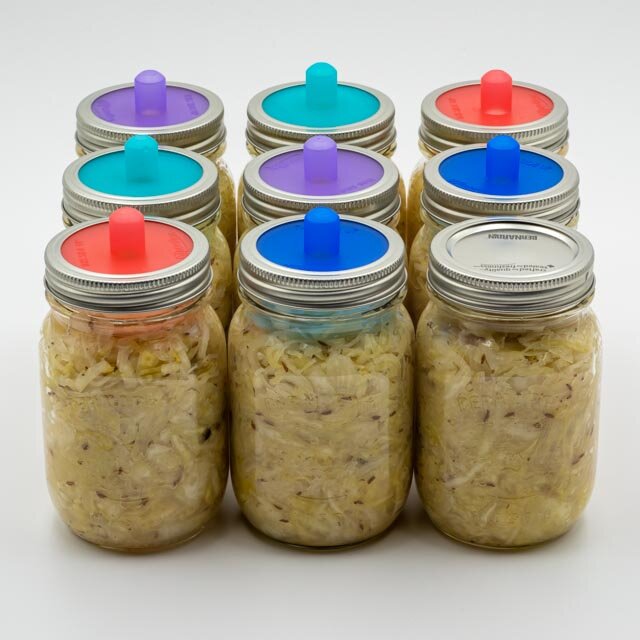
Ingredients:
- 4 kg Cabbage
- 2 Granny Smith Apples
- Himalayan Pink Salt (2% of weight of cabbage)
- 2 tablespoons of caraway seeds
- 1 tablespoon of juniper berries
- Optionally: 1 tsp celery seeds; 1 diced onion; 1 tsp mustard seeds (I add them all)
Steps:
- Slice thinly the cabbage, but keep a few of the outer leaves for later (see notes below).
- Add all ingredients to mixing bowl
- Press or pound the cabbage to release juices (see notes below)
- Move cabbage mixture to crock, cover with outer leaves, water and a weight
- Ferment for about 10 days on counter (about 20C)
Notes:
- While many recipes specifically recommend against using metal mixing bowls / containers and utensils, the only container I have that is large enough to process the cabbage is a metal pot. It seems to work. As I slice the cabbage, I add it with all the ingredients into the pot. When all the cabbage is cut, I start mixing and smashing it with a potato masher. I pound the cabbage mixture for about 5 minutes, every 20 minutes, over a 4 hour period. I estimate the volume is reduced by about half through this pounding process. This time is required to have the salt interact with the cabbage so it releases its juices.
- After those four hours, I move the cabbage mixture into the crock, and pressed it down tightly. I push down any cabbage stuck to the sides of the container; essentially, I try to make the top of the contents as flat as possible so no cabbage would be exposed above the brine. I then place the saved cabbage leaves over the top of the cabbage, and tuck them down the side between the cabbage and the side of the crock. These leaves act as sort of a seal to keep small pieces of cabbage from floating upward. I then place a weight over the cabbage leaves and then pour in enough water to cover the cabbage leaves by about 2 cms. At this point there should be about 2-3 cms space between the top of the brine and the top edge of the crock.
- I have a glass crock that has a water-sealed lid. This allows the gasses manifest from the fermentation process to escape, without letting air in that might promote mould.
- The final question is how long to ferment. There is no single answer. I let mine run 10 days and I am very happy with the results. The kraut is crunchy, the right colour and not too salty or bitter. It is in fact a bit sweet. Some recipes suggest anywhere from 1 week to 6-8 weeks. The variability is tied to individual taste and the room temperature (the cooler the room the longer the period). The problem with taste is it requires one to open the crock, and thus break the seal.
I can attest to the end result as being much better than expected. The result was about 4-1/2 litres of sauerkraut.

